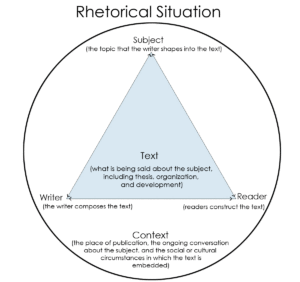Now that we’re getting our feet under us in terms of what organizational culture is, why diversity and inclusion are part of the conversation, and how thinking about rhetorical situation can help us to engage with complex texts, it’s time for us to build on that.
As a group, we’ve all been working with the same set of texts, and that gives us a shared foundation of knowledge. What I’ve tried to assemble here is a set of texts that function as a canon–works that are essential to an understanding of the subject matter, important and influential works. But there’s so much more out there to explore, and that will be your primary work for the week–looking around to locate an additional text that you think should be part of the canon.
Canonical works are substantive–building on careful and thoughtful research. They provide new insights and ideas, and don’t simply re-present known information. They work well for their audience, so that they can contribute to the world of knowledge.
Chances are you’ll need to look at several articles to find one that does all this and that meets the particular criteria that are set forth on the
The SU libraries’ website is a good starting point. You can use the Advanced Search functions there to help filter the results so they meet some of the basic criteria to start with (i.e. adjusting the publication dates, limiting the types of publications, etc.). You’ll find a number of useful tutorials on the library site if you’re not already familiar with using it. This search tips page is a good place to start.
(A quick note on using SU libraries vs. Google Scholar–you’ve already paid for the SU services and won’t ever bump into a paywall; on Google Scholar, you often will. The library also provides free research support, which you can’t get on Google.)
So, where to begin? Here’s an overview of your tasks for the week:
Reading assignments:
- chapters 2 and 3 of TSIS
- chapter 1 of Rewriting by Joe Harris (PDF on Blackboard)
- “Understanding key D&I concepts” (PDF on Blackboard)
- your selected article (that you plan to contribute to the canon)–to write an effective summary, you will need to read this carefully and probably more than once. Be sure to consult the close reading handout and the handout on summary.
Discussion/writing assignments:
- write a 100-200 word summary of either the Kaplan and Donovan article from this week OR the Austin and Pisano article from last week, and submit this on the blog (categorize as “Discussions/Homework”; tag with “K&D” or “A&P” as appropriate, along with “weekof6/21,” and [your name] (due Weds., 6/23)
- respond to 2 of this week’s discussion questions (linked below). Categorize as “Discussions/Homework”; tag with “weekof6/21,” “unit1,” and [your name]. (due Thurs., 6/24): https://ksoakes.expressions.syr.edu/wrt205summer2021/2021/06/21/discussion-prompts-for-week-of-6-21/
- respond to at least 2 of your classmates’ discussion posts on the blog (due Sat., 6/26) write a 200 word summary of your selected article. Include a link to or PDF of the article you’re working with, and reference the author and title of the text you are summarizing. Categorize this as “Expanding the Canon”; tag it with “summary,” “weekof6/21,” and [your name]. (due Sun., 6/27)

